Robert Smalls, War Hero and US Congressman
Freedom is a strange thing. Those of us born into it take it for granted. But for those born into slavery freedom is something they would never undervalue. Being a slave is bad enough, but worse is for a slave to see their child born into slavery, and to know the life that awaits them. That’s the sort of thing that might motivate someone to take an unimaginable risk in order to win their freedom. One person who had the courage to take that risk was Robert Smalls.
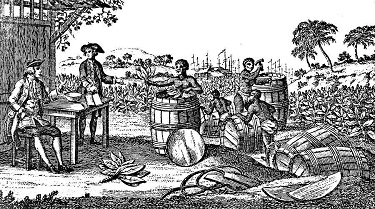
Robert Smalls was born into slavery in Beaufort, South Carolina in 1839. His mother Lydia was a house slave for the McKee family. Who his father was isn’t recorded, but it’s generally assumed that it was the son of the family, Henry McKee Junior. After all, sexual abuse of slave women was a proud Southern tradition back in those days. Robert was raised in the family home where his mother worked, arguably one of the gentler upbringings a slave boy could receive in those days. He even had white playmates, something which worried his mother immensely. All it would have taken was one accident where he could be blamed, and Robert might have found himself in a lot of trouble. In order to show him those consequences, his mother sent him out into the fields of the rice plantation to see for himself the type of suffering that the colour of his skin could bring him.
Lydia made sure that Robert was also aware of his heritage as part of the emerging “Gullah” (or sometimes “Geechee”) culture on the southeastern coast of the USA at the time. The slaves who had been forcibly transported there had come from many different parts of Africa, which is after all a vast continent. For example, the majority of their slaves came from either Senegal or Angola – two areas that are literally thousands of miles apart. These people now had to make their life together under enslavement, and so they had to learn to speak to each other and forge a common culture. They developed a new language, one based on the English they were forced to learn but with their common words and grammar mixed in. And they developed their own identity, a small victory over the people who had enslaved them.
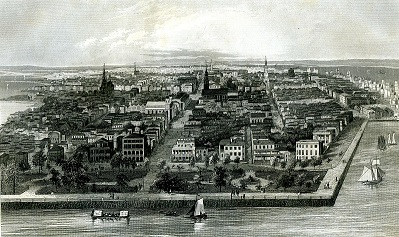
In 1851 the McKee family suffered some financial troubles. They had to sell off their big house, and they needed their “assets” like Robert to begin bringing in some cash. So he was sent out to the docks in Charleston to find work and earn money for them. The wages he earned as a dock worker went to the McKees, and they then graciously returned a small portion (less than 5%) to him to allow him to keep himself lodged and fed. He was an industrious young man who knew that the little independence he now had was entirely dependent on it being a profitable venture. Who knew when the McKees might decide that they would rather take the lump sum profit of putting him up on an auction block? So he took whatever jobs he could get his hands on – lighting lamps, moving cargo, making sails, even working in a hotel. And it was at that hotel where the sixteen-year-old Robert met a woman named Hannah Jones.
Like Robert, Hannah was a slave. She was owned by the proprietor of the hotel where she worked – just another part of the fixtures and fittings. She was twenty-one years old, and had two children. Who their fathers were isn’t recorded. There wasn’t a big focus on keeping track of the fathers of slave children back in those days. Partially this was to avoid exposing the rampant hypocrisy of the “fine upstanding citizens” who forced themselves on their slaves, and partially this was because it just didn’t matter. If your mother was a slave, then you were a slave and property of whoever “owned” her. Some slave owners did have a little sentiment for their slave children – when the US Senator for South Carolina, James Henry Hammond, made a gift of a fifteen-year-old slave girl to his son Harry he told him to take care of her two children as they were of Hammond blood. Even then though he wasn’t sure if it was Harry or he who was their father.

Robert and Hannah were married in 1856. Their marriage brought a great deal of joy into Robert’s life, and the joy was increased in 1858 when Hannah had their daughter Elizabeth. But the joy was tempered with fear; the same fear that haunted every slave couple at the time. They were property, and they could be sold as such. If Hannah’s “owner” decided that he needed money quickly he could sell Hannah or her children, and if their new owner lived in a different state then it was almost certain that Robert would never see any of them again. The only solution was to buy them their freedom, so that was what Robert set out to do.
The cost to buy Hannah and her children out of bondage was $800, an almost unimaginable sum for Robert to acquire. He sought out higher paid work, and began sailing on ships that navigated the bay. He was smart and had a good eye, and soon gained a reputation as a solid “wheelman”. A wheelman was what they called a slave who steered a boat, because the white men who did that would have complained if you called them “pilots”. It was well paid work, but the pittance that Robert was allowed to keep from his wages didn’t amount to much. He did some trading himself on the side to try to increase his fortune, but he had only limited success. By 1861 he had managed to save enough to buy his daughter’s freedom, but then Hannah had another child; a son that they named Robert Jr. Robert was delighted to have a son, but it meant that his family’s freedom was further away than ever. Or so it might seem.
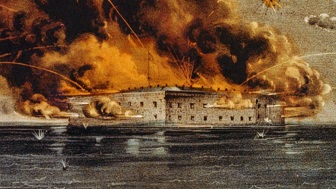
Robert had a ringside view on the 12th April 1861 when the events that would culminate with the end of slavery in America finally reached crisis point. The previous winter South Carolina had been one of several southern states that had declared their secession from the USA, and in the following months, they had reclaimed several former federal properties. One they had not reclaimed, however, was the Union Army stronghold of Fort Sumter that controlled access to Charleston Harbour. The Union refused to give up the fort, and so the newly formed Confederate States of America placed it under siege. After an ultimatum from the Confederacy was refused, in the early hours of the morning of April 12th they began firing the other harbour guns upon Fort Sumter. After thirty-four hours of bombardment, the garrison in the fort surrendered and evacuated. This is now recognised as the first battle of the American Civil War.
The capture of Fort Sumter was the galvanising spark that the northern states needed to finally take action against the southern rebels. Over the next few months an army was mustered in the north, while several slave states which had been on the fence seceded and joined the CSA. Soon the war was in full swing. Charleston Harbour was blockaded by the Union, but it remained an important naval base for control of the rivers of South Carolina. One of the ships that plied those rivers and laid mines in the harbour was the CSS Planter, a wood-burning steamship. And serving as a pilot for the Planter was “wheelman” Robert Smalls.
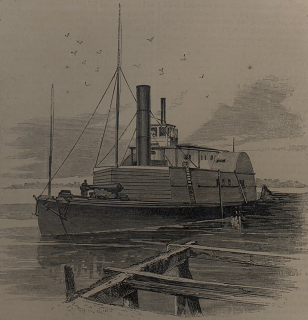
Robert was not the only slave who had been assigned to serve on the Planter, but he was the most senior of them. Of course he was inferior in rank to the three white officers who supposedly ran the ship. In truth it was Robert and the slaves who did all the work, and doubtless it didn’t take Robert long to realise that they could easily run the ship on their own. The key incident that sparked his plan, according to legend, came when he and the other slaves were alone on the boat. The captain was well known for wearing a distinctive straw hat as he walked the deck, and one of the men saw it sitting on a hook. He grabbed it and put it on Robert’s head. “Boy, you look just like the captain,” he said. That was when a light bulb lit up inside Robert’s head.
Robert spent the next month carefully observing the officers, and making sure he could make his plan work. He carefully sounded the rest of the slaves on the crew out, and decided that one of them could not be trusted. The others he let in on his bold plan, and they all decided to join him in his gamble. They all made the necessary arrangements with their families, and then just waited for the perfect moment. On the night of May 13th 1862 it finally came.
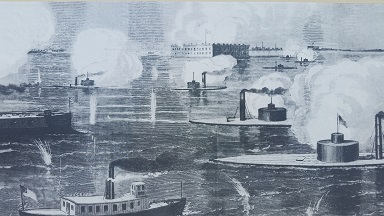
The Planter had already been two weeks on the water when it returned to Charleston to resupply, and it was due to set back out the following morning. Regulations stated that the crew should stay on board, but the officers were restless. They decided to go on shore for a night carousing, and leave the slaves behind to overhaul the ship. It was the opportunity Robert had been waiting for. He sent a message to his wife, and then he and the other crewmen began preparing their ship for her voyage. At midnight, they lit the boilers. Robert put on the captain’s jacket and his straw hat, and then at 2am the slaves of the CSS Planter took their boat out for her final voyage as a Confederate ship.
They picked up their families (including Hannah and her children) [1] at the mouth of the harbour, and then they set out into the bay. The ship was loaded with guns and ammo intended to reinforce the harbour forts, and the crew made preparations to detonate this if it looked like they would be captured. Robert walked the deck in the captain’s hat and jacket, acting just as he had seen the man do. There were five Confederate forts to pass as they headed to the blockade, but they gave the signals and passed without incident. Among them was Fort Sumter. The greatest peril in fact came as they approached the Union ships, as preparations were being made to fire on them before the lookout spotted their white flag. The USS Onward intercepted them, and Robert officially turned the ship over to its captain and requested asylum. His escape had succeeded. He and his family, and those of his men, were free.
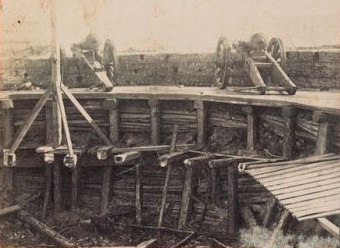
Robert was greeted as a hero by the Union navy. Not only had he given them a ship loaded with weaponry (and so deprived their enemies of it), he brought something even more valuable with him. Intelligence. Robert knew where every mine in the harbour was, and he knew all the defensive dispositions of Charleston’s troops. The most valuable piece of information he had was part of what had made his escape possible. Troops had been withdrawn from Charleston in order to reinforce other areas, and there were only a few thousand men guarding the city. One key fortification at Coles Island had been abandoned only days earlier; in fact the guns the Planter was transporting had been taken from there. The Union were able to sail in and take the forts without firing a shot, giving them a land base for their blockade of Charleston that they would hold for the rest of the war.
Robert’s escape also gave the Union a huge propaganda opportunity that they exploited to the hilt. His daring and heroism were held up as proof that African-Americans were far from the weak-willed creatures that the Southern sympathisers portrayed them as. Congress passed a bill that ruled that the escape on the Planter was a legitimate wartime capture of an enemy ship, and so Robert and his crew received the prize money that was traditionally given to the crew who captured an enemy vessel. [2] He was less popular in the CSA, where a $4000 bounty was placed on his head. The captain of the Planter was court-marshalled and found guilty of incompetence. Conspiracy theories abounded, as many of the Southerners were unable to believe that slaves could have carried out such an exploit. One officer even said that it must have been (white) Union spies who had infiltrated Charleston and led the escape.
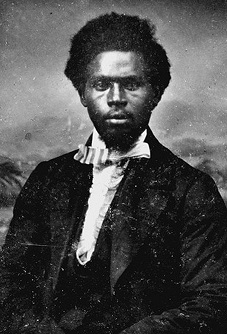
When Robert was invited to the White House to meet with President Lincoln, the abolitionists Frederick Douglass and Mansfield French met with him. Douglass was an escaped slave like Robert, while French was an Episcopal Minister. Both were campaigning for the right of African-Americans to serve in the Union Army, as they believed that this was a vital step to legitimising their status as citizens. Robert’s actions and reputation meshed extremely well with this message, and he was sympathetic to their cause. The Reverend French travelled with him when he met Lincoln, and they also met with Secretary of War Edwin Stanton. It was in part due to this meeting that Stanton issued an order allowing African-Americans to enlist in new regiments organized for this purpose.
The First South Carolina Volunteers was one of the first such regiments, and was made up of escaped slaves from Robert’s own Gullah culture. The islands off South Carolina had been captured early in the war and the slaves there had been freed under the Confiscation Act of 1862. (Recruitment of African-American soldiers would not begin in earnest until the Emancipation Act of the following year.) Robert was a powerful recruitment tool for the First (and later the Second) South Carolina Volunteers. [3] For the rest of the war he spent about half his time on speaking tours across the North recruiting troops for the cause. The other half he spent as a pilot aboard the rededicated USS Planter. On one occasion the captain of the ship was injured and Robert had to step back up and take command of the ship once again. Towards the end of the war he himself received the rank of US Navy Captain.
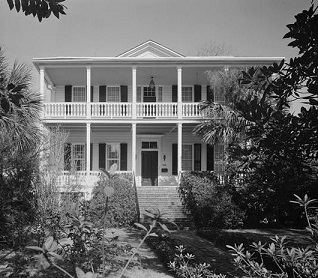
By the end of the war Robert had amassed a decent little nest egg, between his pay and his prize money for the Planter. He moved back to his old home town of Beaufort, where he discovered that the house he had grown up in was up for sale. The DeTreville family, who had bought it, had fled the town when the Union troops took it back in 1861. They hadn’t kept up their tax payments on it and so it had been claimed by the state and was now being auctioned off. So Robert bought it for $650. [4] During the war after the town had been captured, the house had served as a billeting station for Union troops. Robert’s mother Lydia had moved back into the house to serve as a housekeeper for them, effectively and then legally a free woman. Now she shared it with Robert and the new family she had gained. Hannah was there, of course, along with her daughters from before she had met Robert. Robert’s son had died in infancy, but he and Hannah had two daughters of their own; Elizabeth who had been born into slavery, and Lydia who was the first member of the family who had been born a free woman. One notable addition to their family came in 1875 when Robert’s former owner Henry McKee passed away and his wife Jane was left in poverty. Robert had fond memories of Jane (who may, after all, have been his grandmother by blood) and so he took her into his house and cared for her. (There are stories that she was suffering from dementia and thought she still owned the house, a delusion that Robert indulged.) She remained a member of the extended Smalls family until she died in 1904.
1868 was the year where Robert embarked on the new life he planned to lead. Firstly, he went into business. His partner was a fellow mixed-race American named Richard Howell Gleaves. Unlike Robert, Richard had been born free. His father was a Haitian businessman who had married an English woman and moved to Philadelphia. The two men also both decided to go into politics the same year. Richard was the more immediately successful, and by 1872 he had been elected as Lieutenant Governor of South Carolina. However Robert had his own successes, and advanced not only through the State legislature but also through the local militia, where he eventually reached the rank of Brigadier-General.
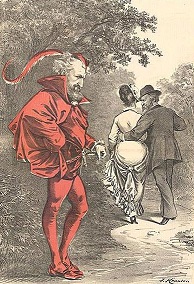
Robert was elected to Congress in 1874, something that would have been unimaginable twenty years earlier. Unfortunately the tide of positive change that had brought him there was already beginning to ebb. The beginning of the end came in 1876, with one of the most controversial elections in US history. The Republican candidate was Rutherford B Hayes, while the Democratic candidate was Samuel J Tilden. (It’s important to remember that at this time in history the Republicans were the socially progressive party, while the Democrats were the ones who sought to restrict civil rights. Robert Smalls was a Republican congressman.) In the election Tilden received 184 votes from the electoral college, while Hayes got 165. However there were twenty votes that were “unresolved”. In three states there was no consensus on who had won the votes, while one elector in Oregon was disqualified after the election. Neither candidate had an outright majority, and this led to months of debates. (It didn’t help that election fraud was rampant on both sides.) Eventually a backroom agreement was reached. Hayes and the Republicans would get the presidency, but in exchange they would remove the troops and oversight that had held back the racist backlash in the South since the end of the war. It was a devil’s bargain, and the price was to sell Robert, and those like him, down the river.
Robert was obviously one of the first targets of the “Redeemers”, as the conservative Democratic activists called themselves. The name was deliberately biblical in context, and was intended to show how the South would “redeem” itself from its wartime past (by avoiding making any changes as a result of it). It also marked the beginning of the American political obsession with legislating morality (ironically by taking the abolition of slavery as a precedent). They targeted Robert by claiming he had taken a bribe for awarding a public works contract. Whether he was guilty or innocent didn’t really matter – the courts were loaded against him and he was charged, convicted and then pardoned as part of an overall scheme to get pardons for conservatives implicated in voter fraud. Naturally this was used against him in the elections, and he lost his seat in the state senate for a few years.
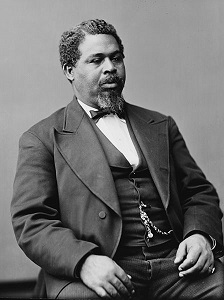
Hannah Smalls passed away in 1883, at the age of fifty-nine. She had always been a rock of support for Robert, and now he was deprived of his greatest friend. Robert did keep his seat as a Congressman, though he lost a few colleagues in the mid 1880s when the districts were gerrymandered to help ensure conservative majorities. He retired from the Congressional elections in 1887, and his seat was taken by a Democrat among further widescale allegations of voter fraud. He remained active enough in politics to try to take a stand against the disfranchisement laws that were introduced by the conservatives to reduce the number of eligible black voters in the 1890s, but he wasn’t able to prevent them passing. As a result targeted regulations around literacy tests and registration restrictions meant that the majority of black voters (along with a large number of poor white citizens) lost the right to vote. [5] Control of the South was seized by the conservative factions, and many of the gains made after the war would be gradually chipped away over the decades that followed.
Ill health due to diabetes caused Robert to retire from public life in the late 1890s. He had remarried in 1890 to Annie Wigg, a schoolteacher. They had a son born in 1892, but Annie died when the boy was only three years old. It may also have been this loss that contributed to his decision to move out of the spotlight. He continued to run his businesses and remain involved in local affairs, and he took on the post of US Customs Collector which he held until 1911. By then malaria and diabetes had combined to make him a permanent invalid. He died in 1915, aged seventy five years old.

Robert was buried in his family’s plot in the local churchyard, yet another thing that might have seemed unimaginable sixty years earlier. He had been a part of that great change, one that remains in progress to this day. In the ensuing decades his heroism was largely downplayed and forgotten, in favor of more popular narratives. But he was far from forgotten. The first US Navy ship named after an African American was the “USAV Major General Robert Smalls”, for example. And only recently his great-great-grandson Michael Boulware Moore, president of the International African American Museum, helped to spearhead a campaign to have a statue of Robert Smalls erected at the South Carolina State House. A potent symbol of a state embracing one of the true heroes of the American Civil War, a man who was determined to live free and to risk death for that freedom.
Images via wikimedia except where stated.
[1] Except for her eldest daughter Charlotte, who was twenty years old and already had a family of her own.
[2] It’s been argued that the prize money was less than they should have got as it didn’t include the value of the cargo on board the Planter. However the calculation of prize money was always a subject of arguments with the government seeking to minimise the amount it paid out, so there’s no reason to believe this was racially motivated.
[3] The Second South Carolina Volunteers was the unit that Harriet Tubman was unofficially attached to during the war.
[4] The DeTrevilles later sued, arguing that they could not have made the payments during the war. They lost the case.
[5] Similar tactics remain in use in America to this day.
